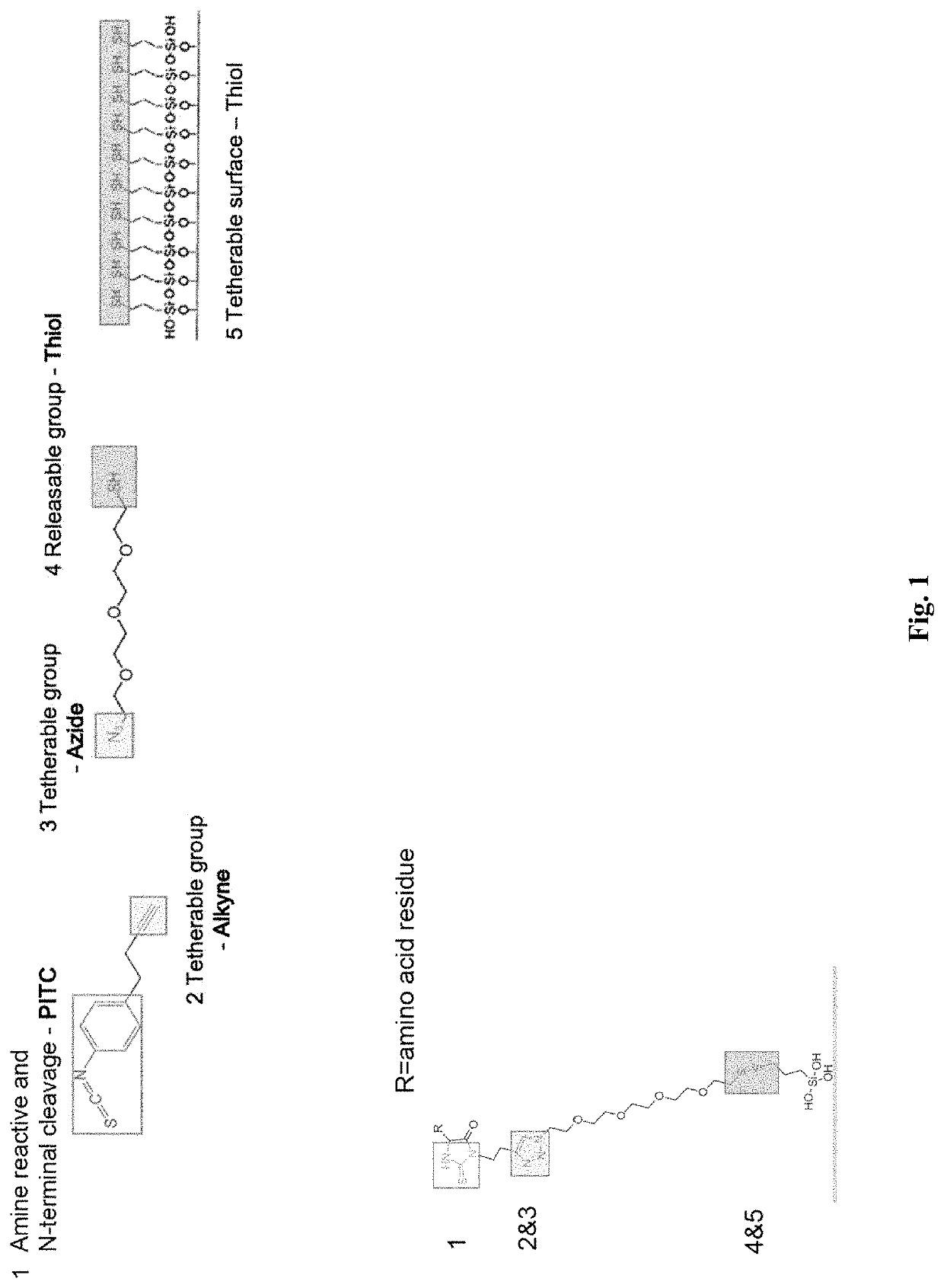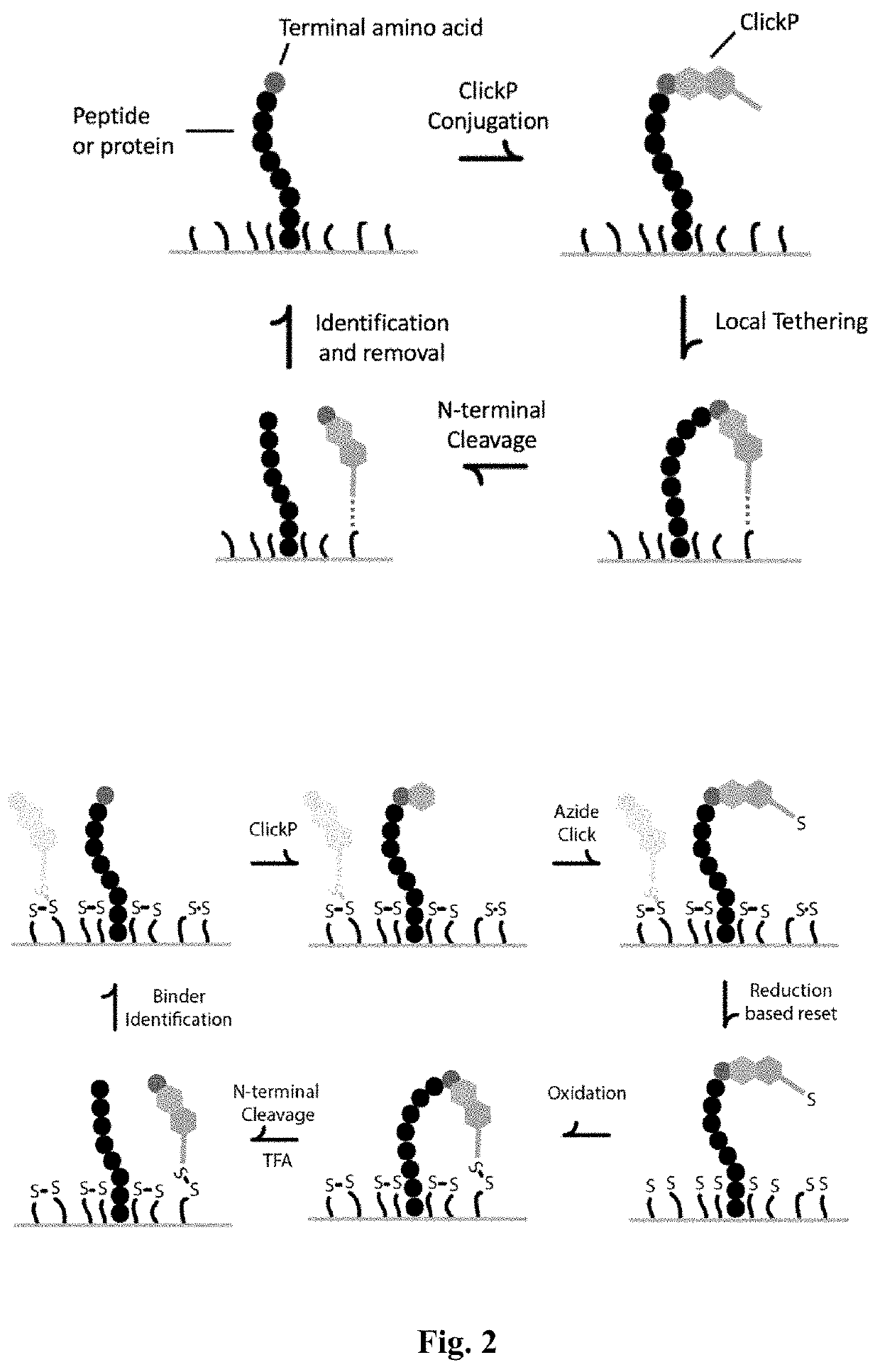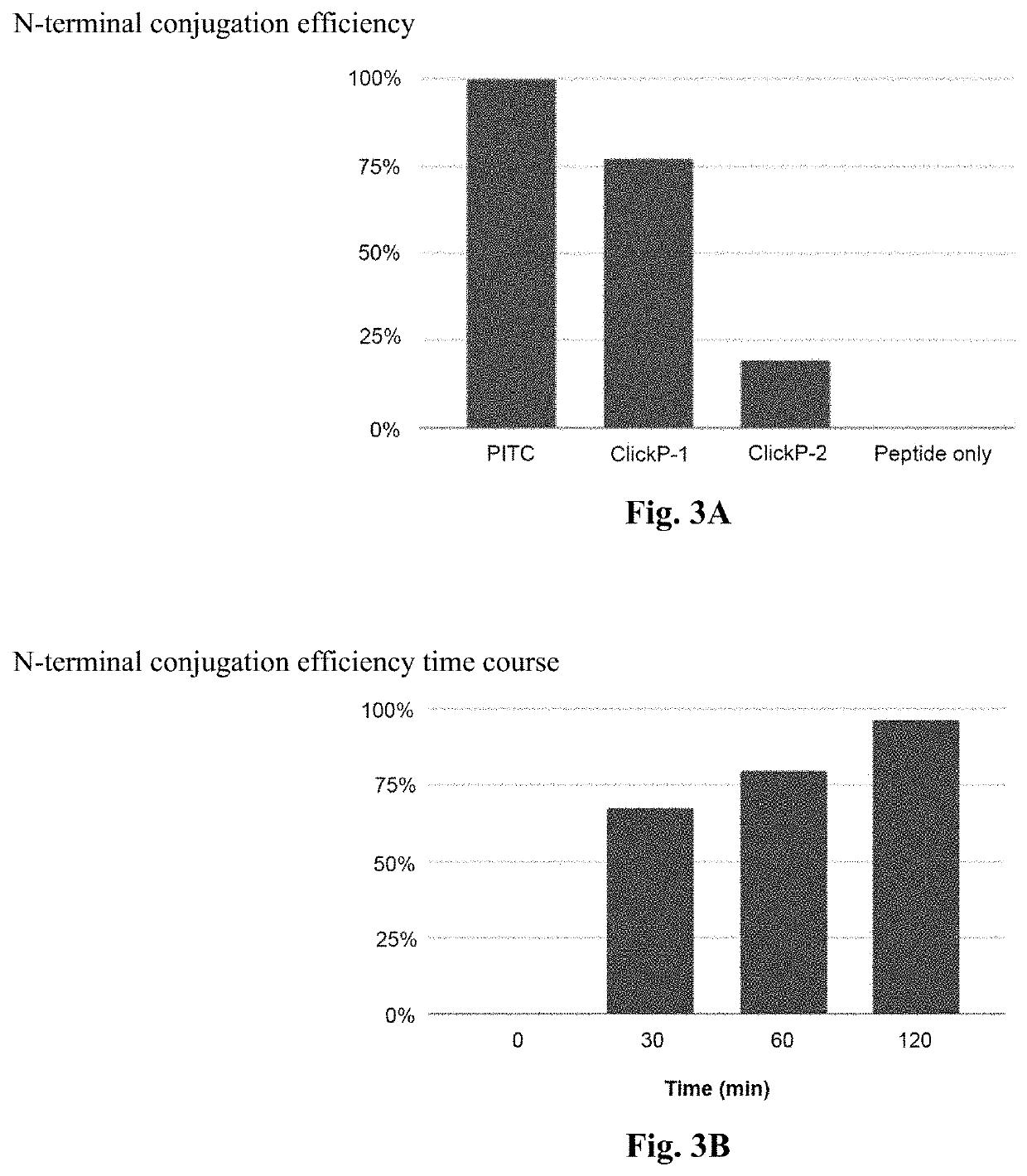Single-molecule protein and peptide sequencing
a single-molecule protein and peptide technology, applied in the field of single-molecule protein and peptide sequencing, can solve the problems of inherently low throughput, limited mass spectrometry sensitivity, and inability to quantitatively quantify a complete set of proteins from a biological system
- Summary
- Abstract
- Description
- Claims
- Application Information
AI Technical Summary
Problems solved by technology
Method used
Image
Examples
example 1
Characterize and Validate ClickP Function
[0145]The ability to conjugate and cleave N-terminal amino acids was determined using the ClickP compound as shown in FIG. 1. The clickable alkyne group on ClickP was also be tested to ensure ClickP can link with azide conjugates.
[0146]ClickP cleavage involved conjugating the PITC group to a peptide of known molecular weight and measuring the molecular weight before and after cleavage using mass spectrometry. The expected reduction in molecular weight by loss of one amino acid would signify a successful cleavage. Mass spectrometry was performed on the peptide only without ClickP, peptide with ClickP conjugated to the N-terminal amino acid, and the cleaved peptide after ClickP removes the N-terminal amino acid. Based on the mass spectrometry results, efficiencies of the conjugation and cleavage to the N-terminal amino acid of two candidate ClickP compounds when compared to PITC is shown in FIG. 3.
[0147]FIG. 3A compares the N-terminal conjugati...
example 2
or Amino Acid Recognition (“Binder” of the ClickP-Amino Acid Complex)
[0150]Single-molecule peptide or protein sequence inherently involves elucidating the amino acid composition and order. All amino acids are organic small molecule compounds that contain amine (—NH2) and carboxyl (—COOH) functional groups, differentiated by their respective side chain (R group). The ability to identify all 20 amino acid requires a set of reagents or methods capable of discriminating their molecular structure with high specificity.
[0151]ClickP-based amino acid isolation solves the “local environment” problem, which is define as the interference of a binder's ability to bind to a specific terminal amino acid due to the variability of adjacent amino acids. FIG. 6A demonstrates that the binding efficiency of an antibody targeting tryptophan at the N-terminal amino acid is perturbed by adjacent amino acids. Binding amount was quantified by biolayer interferometry. By removing the local environment proble...
example 3
nd Scaling to Proteome
[0159]Amino acids can be identified by integrating all components of ClickP isolation of N-terminal amino acids, labeling with ClickP-amino acid specific binders, imaging, and release of ClickP for subsequent cycles of amino acid identification. Sufficient cycles of amino acid identification will provide protein sequencing information.
[0160]Peptides will first be immobilized by the C-terminus with carboxy crosslinking chemistry. Next, ClickP binds to the N-terminal amino acid of the peptide and tethers to a functionalized substrate with the addition of a removable group. Following N-terminal cleavage, the isolated ClickP-bound amino acid is labeled with binders, imaged and removed.
PUM
| Property | Measurement | Unit |
|---|---|---|
| wavelengths | aaaaa | aaaaa |
| synaptic plasticity | aaaaa | aaaaa |
| Mass Spectrometry | aaaaa | aaaaa |
Abstract
Description
Claims
Application Information
 Login to View More
Login to View More - R&D
- Intellectual Property
- Life Sciences
- Materials
- Tech Scout
- Unparalleled Data Quality
- Higher Quality Content
- 60% Fewer Hallucinations
Browse by: Latest US Patents, China's latest patents, Technical Efficacy Thesaurus, Application Domain, Technology Topic, Popular Technical Reports.
© 2025 PatSnap. All rights reserved.Legal|Privacy policy|Modern Slavery Act Transparency Statement|Sitemap|About US| Contact US: help@patsnap.com



